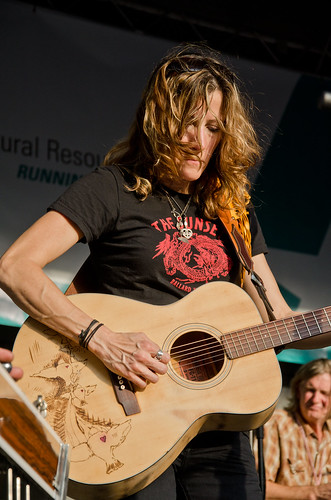
Back when I still went to bars in Atlanta, on one particular evening, I ended up at legendary music venue Eddie’s Attic listening to Michelle Malone. I’ve seen two of her live shows, and I along with other obsessed fans can tell you that she is a R.O.C.K. G.O.D.D.E.S.S. As a Rock Goddess, she was especially on fire the night that I saw her play for the 2nd time. One song she played was particularly memorable, although I didn’t know the name. The audience was feeling it, the band was feeling it, and so was I. When the song finished, there was this vacuum of air in the room created by the energy of the music, the band and the audience. We were all dripping with sweat. A breathless Michelle Malone looked out into the audience and said in her deep, sultry, rock goddessy-voice, “well…that was religious,” and the audience went nuts screaming, applauding and stomping on the floor. I consider that show one of my peak experiences as a concert goer.
In continuing with working on building my own credo for software, I’m starting to really get to the heart of the matter as I ponder “religious experiences” with peaks, plateaus and valley’s in the context of making software. I almost skipped this section because I wasn’t sure this would really fit in with looking at software. As I was debating this in my mind, my friend, Lanette, was in town, and I mentioned it to her. “Oh, there’s religion here.” She said. “What do you believe in strongly enough to sacrifice your standing in the community?” she asked.
We all end up with our own strong beliefs about software eventually. It’s those “a-ha” moments or the sad lessons from “death march” projects that ultimately show us what works for making software and what doesn’t. These experiences are the peaks, plateaus or valleys of our working life and we earn them. I would even go so far as to say that it’s not just the practical experience we have in software but the lessons we bring from outside into software that also shape us as software makers. Connecting our experiences with what we learn from them ultimately results in beliefs we feel strongly about, and when we talk about these beliefs with others they become an expression of who we are.
Here are a few posts that, to me, look like they revolve around a deep realization or experience the writer has had in connection to the making of software. If you read them, think about whether each one is a peak, a plateau or a valley.
Word Count: A Happy Surprise by Elisabeth Hendrickson
Selenium Meetup West Coast Style by Lanette Creamer
Off the Beaten Track by Trish Khoo
Against Kanban by Chris McMahon
After reading through the posts, I went back through my own looking for one where I was taking a strong stand. Even though I consider myself an opinionated person, this was more challenging than I thought it would be, but I ended up choosing “My Post About Gender and Diversity.” When I wrote that post, I very much felt backed into a corner. This wasn’t a post I ever would have written if I hadn’t felt unfairly pushed into it (there’s no excuse for that, not even a great post), but I guess that’s life, and ultimately, I’m quite proud of what I wrote.
Working through these has given me the desire to uncover more of my beliefs and to write about them. I’m also thinking about peak or plateau experiences I’ve had as a way to round out some of the negative experiences. I love Elisabeth’s post because she has this great peak experience that justifies opinions she already had.
If you’d like to consider your own experiences and how they connect to your beliefs, here are a few questions to get you started:
Have you ever had an ecstatic experience while working with software?
Have you ever made deep realizations about the way you work or about the work that makes you happiest? Have you ever realized that you needed to change course with something you were doing in a big way?


